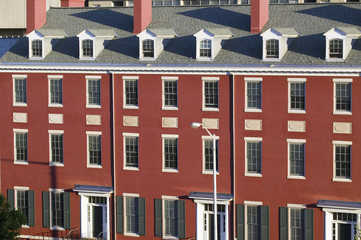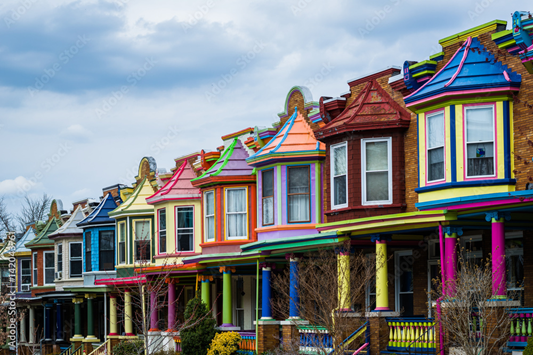Joseph Libkey Jr. built a reputation during his time working within the greater Baltimore area on redevelopment projects showing a commitment to historic preservation and adaptive reuse.
Mr. Libkey mentions that property flipping in areas with inventory of historic, older properties requires an understanding of why the process is so important as well as how it can be better facilitated to protect the rich history of areas within our cities.
Here, Joe Libkey Jr. addresses the topic of historic preservation in real estate and a few important insights for developers, investors, and community members to consider.
What is Historic Preservation?
Historic preservation is the process of identifying, protecting, and enhancing buildings, places, and objects of historical and cultural significance. Generally, these properties are at least 50 years old, however, many historic buildings within the US can be even older.
Drawing from Previous Preservation Experience Within Baltimore
Over the course of Joseph Libkey Jr.’s career in real estate investment and development within Baltimore, he played a pivotal role in ensuring that blighted, underserved areas of the city were revitalized through renovations and adaptive reuse.
For example, properties such as 533 S. Chester St. 21231 and 406 S. Clinton St. 21224 stand out as high-end luxury townhome re-development projects that Mr. Libkey has worked on within Baltimore’s historic Fells Point and Butchers Hill neighborhoods.
Notably, these structures are over a century old, and Joseph sees these renovations and similar projects as a way for developers to maintain the rich cultural history of Baltimore as revitalization plans go underway in a variety of key areas.
The Benefits of Historic Preservation Projects in Baltimore

Joe Libkey Jr. mentions that there are dozens of reasons why historic preservation projects are so important to the city of Baltimore. One of the premier reasons is that they maintain a sense of cultural identity and pride among residents of the community. Feeling connected to our past has a profound influence on our future and can uphold character in our cities that isn’t often found in completely new construction.
There is also the benefit of cohesive, quality design and materials. Renovating historic structures provides the opportunity to maintain some of the appealing design and physical resources found in older buildings such as fixtures, rare hardwoods, etc. The reuse aspect of these renovations is beneficial for the environment as well because the use of new building materials is lower, and the land is already developed.
The Financial Side
Renovating historic structures can be a daunting undertaking, which is why some cities have made efforts to incentivize developers to contribute to historic preservation. For example, Baltimore’s historic tax credit was created in an effort to preserve the city’s historic character. CHAP, Baltimore’s Historic Rehabilitation and Restoration Tax Credit, has incentivized builders for over 25 years as of 2023, offering 100% tax exemptions on renovations and redevelopments of properties within the city’s designated historic neighborhoods.
The tax credit makes small residential renovations eligible for 10-year, total tax exemption on their development, with larger projects (over $5M) eligible for an initial 80% tax break that decreases over the span of 10 years. This past February, the tax credit received a 12-month extension, meaning that it will be able to further incentivize developers and renovators for at least another year.
Mr. Libkey finds that preserving older structures is also encouraged within the city of Baltimore because it can be immensely beneficial for the local economy. When we renovate these buildings, there are many professionals who lend their labor and expertise. Contractors, project managers, landscapers, designers, and engineers are just a few pieces of the puzzle necessary for carrying out these projects.
It is important to remember that, when money is spent on these professionals locally, it stimulates the local economy while helping the money recirculate. Experts find that dollars spent in your local economy recirculate as many as 2-4 times more than money spent non-locally.
How Can Developers Better Protect Historic Structures Moving Forward?
There are many ways that developers and investors can better protect historic structures moving forward, all of which begin with a genuine interest in maintaining the culture, history, and accessibility of culturally rich areas.
Identification is a large first step in the process. Once people are aware of the significance and purpose of historic buildings it is much easier to preserve and even reuse them in the future. Recognition and documentation are key.
Mr. Libkey speaks to how change can be a good thing, especially for properties that have faced decades of neglect and are at risk of becoming unsafe for property owners or visitors. Real estate professionals still should remain mindful of how these changes are made.
While it may not be possible to avoid modernization of some kind when renovating historic structures, professionals can take special care to ensure that the character and history of a building is maintained throughout the process. This is true even if adaptive reuse is leveraged to change the function of the building, and cities such as Baltimore, Boston, and a few others have already made a point to do so.
With this in mind, experts and thought leaders within the development field have recognized that protecting properties of our past is much more streamlined with a clear vision of our future. Adapting historic structures to suit modern life through proper planning, policies, and financial incentives can keep us on track towards protecting the rich history of our country.









